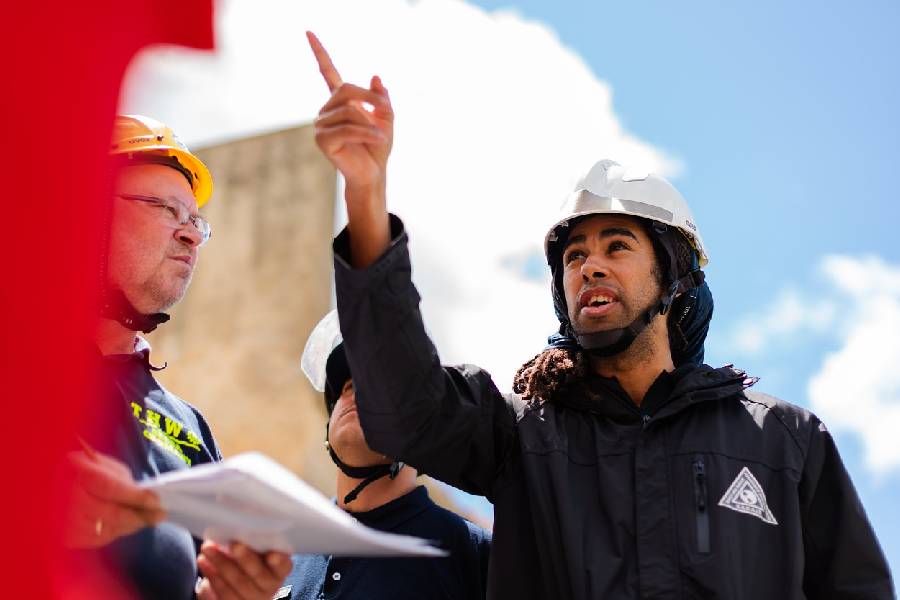Civil engineering is a field that lies at the heart of our modern world. It silently shapes the environments we live in. It’s a discipline that encompasses a multitude of tasks, responsibilities, and innovative solutions.
These are aimed at making our surroundings safer, more efficient, and more sustainable. So what do civil engineers do? Why is their work so crucial?
Here, we’ll dive into the intricacies of their work and discover the broad spectrum of tasks they undertake.
Let’s unravel the mystery and significance of their profession.

Building the World Around Us
Whether it’s designing awe-inspiring bridges, ensuring the durability of our roads, or finding ingenious solutions to complex environmental challenges, civil engineers are the architects of our modern infrastructure.
Civil engineers play a vital role in shaping and advancing modern civilization. Their ingenious designs and meticulous planning transform ideas into reality by creating the structural frameworks and infrastructure networks that underpin society.
What Do Civil Engineers Do?
The fruits of their labor are the foundations on which communities grow and thrive. Civil engineers design the homes we live in, the office buildings and factories where we work, and even the roads and bridges that connect us.
Their expertise allows us to inhabit skyscrapers, travel underground through subway tunnels, cross streams and valleys over bridges, and stay safe within structures that can withstand the forces of nature.
From the Hoover Dam and Golden Gate Bridge to the world’s tallest building Burj Khalifa, civil engineering landmarks reflect human ingenuity in harmony with aesthetic beauty.
As stewards entrusted with public safety, civil engineers have a profound impact on improving lives and shaping a built environment that stands the test of time. Their creativity and technical brilliance turn dreams into awe-inspiring practical realities.
The Meticulous Process from Vision to Reality
Civil engineering projects follow a structured process, and civil engineers oversee each step, ensuring that projects are not only well-designed but also executed seamlessly with safety and longevity in mind:
1. Project Assessment and Site Analysis
- Civil engineers assess project needs and survey site locations.
- Our engineers evaluate environmental factors, such as weather patterns and seismic risks.
2. Technical Drawings and Planning
- Engineers create detailed technical drawings and plans
- Civil engineers specify materials and calculate stress factors to ensure structural stability.
3. Coordination and Collaboration
- Civil engineers coordinate with architects, construction crews, government agencies, and specialists.
- Their role is to ensure that all project phases align with the original vision, adhere to regulations, and meet design specifications.
4. Surveys, Permits, and Materials Testing
- Our civil engineers oversee property surveys to ensure compliance with regulations.
- They manage permitting and secure the necessary approvals for construction.
- Materials testing ensures the quality and durability of construction materials.
5. Ongoing Monitoring
- Continuous monitoring by civil engineers at Cypress Environment & Infrastructure ensures compliance with regulations and design specifications throughout the construction process.
- The project remains on track, maintaining quality and safety.
6. Post-Construction Inspection
- Post-construction, our civil engineers conduct inspections to maintain and enhance safety and integrity.
- The focus is on ensuring that the project stands the test of time and delivers long-lasting value to the community it serves.

Solving complex problems
At Cypress Environment & Infrastructure, our daily endeavors are marked by an array of intricate challenges. We don’t simply design impressive structures; we are problem solvers, constantly seeking innovative solutions to multifaceted problems. These challenges encompass:
Site analysis
We embark on each project with a meticulous site analysis. This involves assessing the terrain, comprehending its geological composition, and considering the impact of various environmental conditions. This process lays the groundwork for our construction projects, ensuring that the chosen location is not just suitable but also the safest option.
Environmental considerations
Environmental factors are paramount in our work. We are committed to sustainability and minimizing the environmental impact of construction. This includes adhering to local regulations, reducing ecological footprints, and integrating eco-friendly designs into our projects.
Project requirements
Navigating the intricate maze of project requirements is an everyday challenge. We carefully balance budget constraints, adhere to strict timeframes, meet rigorous safety standards, and tailor our solutions to the unique needs of the communities we serve.
Design obstacles
Our work often entails addressing formidable design obstacles. These can range from solving unique architectural challenges to accommodating complex structural demands or adapting to unforeseen issues that may arise during construction.
Project Planning and Design
One of the first steps in their intricate process is to craft detailed blueprints and models for their projects. These blueprints are the roadmap for what will soon become a reality.
Every detail, from the size and placement of structural elements to the choice of materials, is carefully considered and integrated into these plans. What sets civil engineering apart is the level of meticulous planning that is invested in the initial phases of a project.
Before a single shovel hits the ground, engineers painstakingly assess site conditions, local regulations, environmental impact, and more. This stage, though often less visible to the public eye, is the foundation upon which the entire project rests.
Making Ideas Come to Life
Civil engineers are more than just designers; they are responsible for seeing a project through, from plans to successful execution. As the project moves from plans to action, these professionals take on a critical role in managing construction projects.
Their responsibility extends to ensuring the smooth execution of those meticulously crafted plans. One of the key aspects of their work involves coordinating with a diverse range of players in the construction process, including contractors, subcontractors, and specialized construction teams.
This coordination ensures that the project progresses as intended, keeping it on schedule and within budget. Civil engineers also play an essential role in quality control. They’re not content with mere compliance; they enforce stringent quality standards to ensure that the final product meets or exceeds expectations.
Compliance with safety regulations, environmental standards, and building codes are all part of their purview. Their watchful eyes, combined with their technical expertise, guarantee that the project is not only a work of engineering marvel but a safe and sustainable addition to the world.

Source: pixabay.com / Photo Contributor: RAEng_Publications
Conclusion
Ultimately, what do civil engineers do? Our civil engineers undertake a broad range of responsibilities, from initial site analysis and planning to managing complex construction coordination.
Their work results in awe-inspiring feats of infrastructure that better connect communities and stand the test of time. While you often only see the end products like monumental bridges, the bulk of our work involves meticulous planning, creative problem-solving, and ensuring safety and sustainability.
At Cypress Environment & Infrastructure, we are proud to be part of this noble profession that constantly strives to engineer a better, more connected world.
